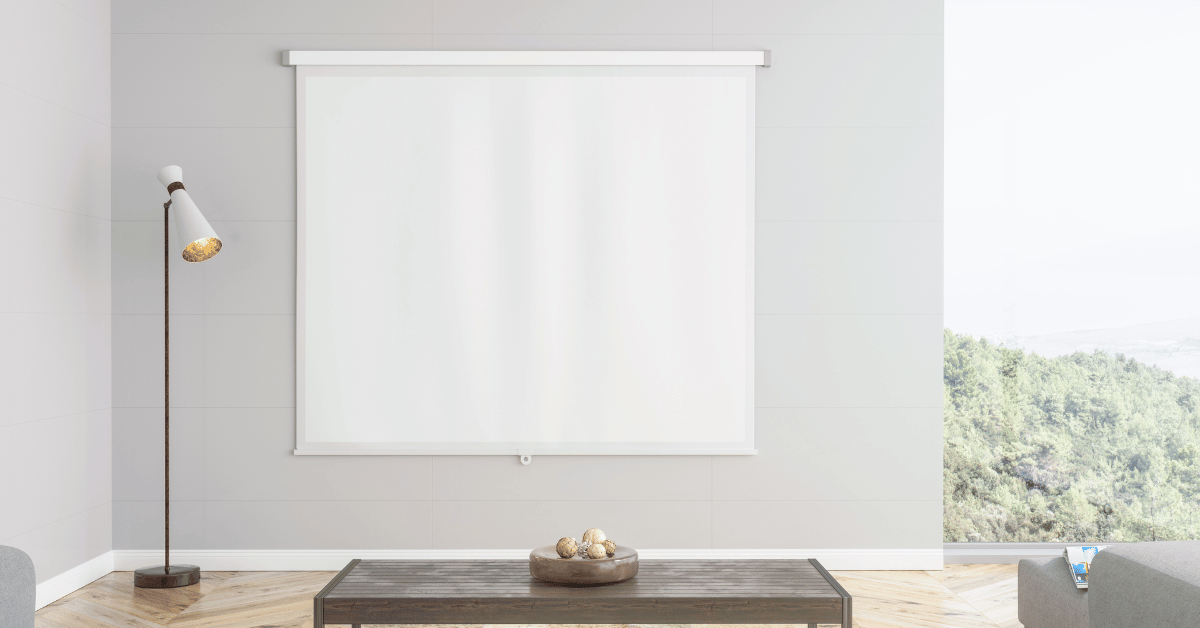A projector screen is an essential component of any projector setup, providing a surface on which the projected image can be displayed. However, choosing the right projector screen can be challenging, with factors such as size, aspect ratio, and material to consider. In this article, we will explore how to choose a projector screen that meets your specific needs. By understanding the different options available and how they affect the viewing experience, users can make informed decisions when selecting a projector screen for their home theater or business needs.
Table of Contents
How to Choose a Projector Screen?
When it comes to creating a high-quality viewing experience with a projector, choosing the right screen is just as important as selecting the right projector. A projector screen provides a surface on which the projected image can be displayed, and selecting the right screen can greatly enhance the viewing experience. In this article, we will explore how to choose a projector screen that meets your specific needs.
Screen Size
The first consideration when choosing a projector screen is the size. The size of the screen should be determined by the viewing distance and the size of the room. The screen should be large enough to provide a clear and detailed image but not so large that it becomes distorted or difficult to see. As a general rule, the screen should be at least twice the diagonal size of the projected image.
Aspect Ratio
The aspect ratio of the projector screen should match that of the projector. The most common aspect ratios are 4:3, 16:9, and 2.35:1. The 4:3 aspect ratio is commonly used for business presentations, while the 16:9 aspect ratio is popular for home theaters and gaming. The 2.35:1 aspect ratio is used for widescreen movies and can provide a more cinematic experience.
Gain
The gain of a projector screen refers to its ability to reflect light. A higher gain screen will reflect more light, resulting in a brighter image. However, a higher gain screen can also result in a narrower viewing angle and can cause hot spots or uneven brightness. A lower gain screen will provide a wider viewing angle but may result in a dimmer image.
Material
The material of the projector screen can also affect the viewing experience. The most common materials are matte white, grey, and high-contrast. Matte white screens provide a neutral color balance and are suitable for most applications. Grey screens are designed to improve contrast in a room with ambient light, while high-contrast screens are designed for use in rooms with low ambient light.
Installation
Finally, consider the installation of the projector screen. There are several types of screens available, including fixed frame, motorized, and manual pull-down. Fixed frame screens are permanently mounted and provide a flat, stable surface for the projected image. Motorized screens can be raised and lowered with a remote control, while manual pull-down screens are manually operated and can be easily stored when not in use.
Type & Size of the Room where You will Use the Projector
When choosing a projector, it is important to consider the type and size of the room where it will be used. The size and layout of the room can greatly affect the viewing experience, and selecting the right projector can ensure that the projected image is clear, bright, and easy to see.
The first consideration when choosing a projector for a specific room is the size of the room. The larger the room, the brighter the projector needs to be to create a clear and visible image. In a small room, a projector with a lower lumen output may be sufficient, while in a larger room, a projector with a higher lumen output may be necessary.
The layout of the room is another factor to consider. The distance between the projector and the screen, as well as the height and angle of the projector, can affect the size and quality of the projected image. It is important to choose a projector with the appropriate throw distance for the size of the room, as well as a lens that can be adjusted to accommodate the height and angle of the projector.
The type of room where the projector will be used is also important to consider. For example, a projector used in a home theater may require different features than a projector used in a business or educational setting. In a home theater, a projector with high contrast and color accuracy may be necessary to create a cinematic experience. In a business setting, a projector with a high lumen output and easy connectivity options may be more important.
Overall, selecting the right projector for a specific room requires considering factors such as the size and layout of the room, the intended use of the projector, and the features necessary to create a clear and visible image. By understanding these factors and choosing a projector that meets specific needs, users can enhance their viewing experience and get the most out of their projector.
Conclusion
In conclusion, choosing the right projector screen is essential for creating a high-quality viewing experience. Considerations such as screen size, aspect ratio, gain, material, and installation should all be taken into account when selecting a projector screen that meets your specific needs. By understanding the different options available and how they affect the viewing experience, users can make informed decisions when selecting a projector screen for their home theater or business needs.

